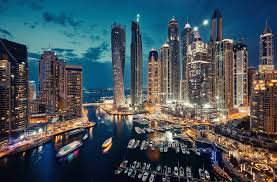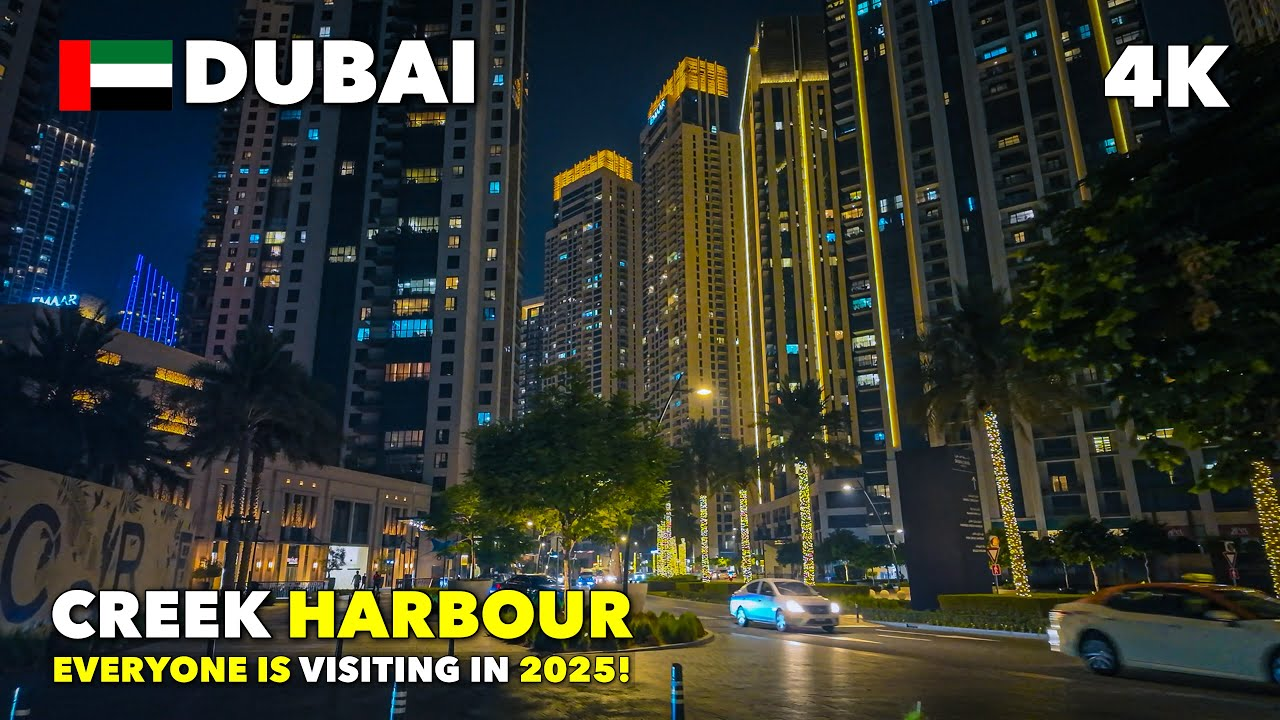Now Reading: Palm Jumeirah’s New Villas Offering Ultra-Luxury Living in 2025
-
01
Palm Jumeirah’s New Villas Offering Ultra-Luxury Living in 2025
Palm Jumeirah’s New Villas Offering Ultra-Luxury Living in 2025
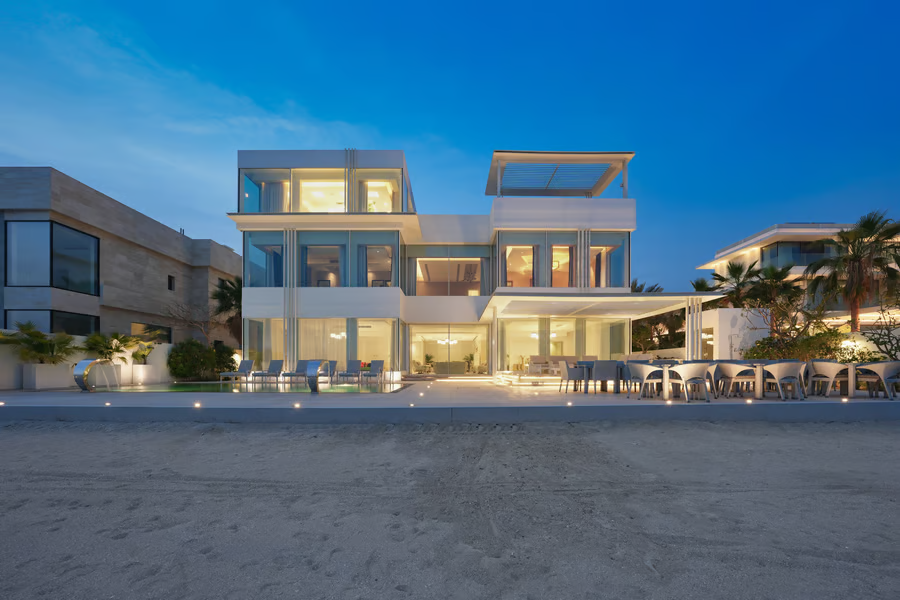
Table of Contents
Imagine waking to the gentle lapping of waves, your private infinity pool blending seamlessly with the Arabian Gulf, as your smart villa adjusts the lighting to frame a perfect sunrise. You step onto your terrace, yacht ready at your private jetty, with the iconic Dubai skyline shimmering in the distance. In 2025, Palm Jumeirah’s new ultra-luxury villas are redefining coastal opulence, contributing to a real estate surge with 96,000 transactions worth $87 billion in the first half, 58% driven by buyers from the UK, India, Russia, and China.
Offering 100% freehold ownership, a dirham pegged to the U.S. dollar, and no personal income tax, capital gains tax, or annual property taxes, these villas deliver 5-7% rental yields and 10-15% price appreciation, outpacing London (2-4%) and New York (2-3%).
Properties over $545,000 qualify for a 10-year Golden Visa, enhancing their prestige. Fueled by 25 million tourists and a 4% population surge, these villas combine private waterfronts, bespoke designs, and cutting-edge technology to create a lifestyle that’s as lucrative as it is breathtaking. Navigating fees, VAT, and 2025 regulations is key to securing your place in this ultra-luxury haven.
Why Palm Jumeirah’s New Villas Define Ultra-Luxury
Nestled along the Palm’s iconic fronds and crescent, 20-30 minutes from Dubai International Airport via Sheikh Zayed Road or private water taxis, these new villas boast vacancy rates of 1-2%, compared to 7-10% globally. You keep 100% of rental income $400,000-$800,000 annually on $8 million-$15 million properties versus $220,000-$480,000 elsewhere after taxes.
Zero capital gains tax saves $160,000-$900,000 on $800,000-$4.5 million profits, and no property taxes save $80,000-$150,000 yearly, unlike London’s council tax (up to 2%) or New York’s property tax (1-2%). Residential purchases skip 5% VAT ($400,000-$750,000), and the Golden Visa adds residency allure. With private beaches, infinity pools, and proximity to landmarks like Atlantis The Palm, these villas achieve 10-15% price growth, driven by their exclusivity and global elite demand, making them the pinnacle of ultra-luxury living.
Living here feels like stepping into a radiant coastal palace.
No Personal Income Tax: Rentals That Build Fortunes
These villas impose no personal income tax, letting you keep every dirham, unlike the U.S. (up to 37%) or UK (up to 45%). An $8 million villa yields $400,000-$560,000, saving $180,000-$252,000; a $15 million villa yields $600,000-$800,000, saving $270,000-$360,000. Short-term rentals, fueled by 25 million tourists visiting the Palm’s resorts or Burj Al Arab, require a DTCM license ($408-$816), boosting yields by 10-15% ($40,000-$120,000). Long-term leases, favored by ultra-high-net-worth families, need Ejari registration ($54-$136) for stability. Non-compliance risks fines up to $13,612, so licensing is crucial. Smart home systems, like AI-driven security and bespoke concierge apps, enhance rental appeal, aligning with the ultra-luxury lifestyle these villas embody.
Tax-free rentals feel like a golden tide of prosperity.
Zero Capital Gains Tax: Profits That Soar
These villas offer zero capital gains tax, letting you keep 100% of sale profits. Selling an $8 million villa for $9.6 million (20% appreciation) yields a $1.6 million tax-free profit, saving $320,000-$448,000 versus London (20-28%) or New York (20-37%). A $15 million villa sold for $18 million delivers a $3 million tax-free gain, saving $600,000-$840,000. With 10-15% price growth driven by limited frond plots and global demand, these villas outperform international markets, where similar properties rarely exceed $10 million. A 4% DLD fee ($320,000-$600,000), often split, applies, but tax-free profits make these homes wealth-building treasures of Palm Jumeirah’s 2025 vision.
Keeping every dirham feels like a radiant financial triumph.
No Annual Property Taxes: Ownership That Feels Effortless
Unlike global markets, these villas have no annual property taxes, saving $80,000-$150,000 yearly on $8 million-$15 million properties compared to London’s council tax ($160,000-$300,000) or New York’s property tax (1-2%). Maintenance fees ($30,000-$50,000) cover private beaches, infinity pools, and 24/7 concierge, aligning with global ultra-luxury standards. A 5% municipality fee on rentals ($20,000-$40,000) applies, reasonable for such an exclusive location. These low costs make ownership sustainable, supporting a lifestyle that feels seamless and regal, perfectly suited to the Palm’s ultra-luxury ethos.
No property taxes feel like a warm breeze lifting your investment.
VAT Rules: A Savvy Investor’s Advantage
Residential purchases skip 5% VAT, saving $400,000-$750,000 on $8 million-$15 million villas, unlike commercial properties or the UK’s stamp duty (up to 12%, or $960,000-$1.8 million). Off-plan purchases, common in the Palm’s new developments, incur 5% VAT on developer fees ($80,000-$150,000), recoverable via Federal Tax Authority (FTA) registration ($500-$1,000). Short-term rental operators must register for VAT if revenue exceeds $102,041, charging 5% but claiming credits on DTCM fees ($408-$816). An $8 million villa yielding $400,000-$560,000 incurs $20,000-$28,000 in VAT, with $2,000-$3,000 in credits; a $15 million villa yielding $600,000-$800,000 incurs $30,000-$40,000 in VAT, with $3,000-$4,000 in credits. Non-compliance risks fines up to $13,612, so meticulous records are essential for thriving in this ultra-luxury market.
VAT exemptions feel like a clever boost to your savings.
DLD Fees and Title Deeds: Securing Your Coastal Palace
The 4% DLD fee, typically split, applies: $320,000 for an $8 million villa or $600,000 for a $15 million villa. Gift transfers to family or shareholders reduce DLD to 0.125%, saving $310,000-$581,250. For instance, gifting a $15 million villa slashes DLD from $600,000 to $18,750. Title deed issuance costs $136-$272, requiring DLD registration. Broker fees, typically 2% ($160,000-$300,000), may be waived for off-plan projects like the Palm’s new frond villas. Mortgage registration (0.25% of the loan, or $20,000-$37,500) and valuation fees ($680-$1,360) apply for financed deals. The 2025 Oqood system ensures escrow compliance for off-plan purchases, protecting your investment in these ultra-luxury villas.
Title deeds feel like the key to your coastal kingdom.
Corporate Tax: A Business Buyer’s Note
Introduced in 2023, the 9% corporate tax applies to businesses with profits over $102,110. A company leasing an $8 million villa yielding $400,000-$560,000 faces a 9% tax ($36,000-$50,400), reducing net income to $364,000-$509,600. A $15 million villa yielding $600,000-$800,000 incurs $54,000-$72,000 in tax. Qualified Free Zone Person (QFZP) status in areas like Dubai Multi Commodities Centre (DMCC) avoids this, saving $36,000-$72,000, with setup costs of $2,000-$5,000. Small business relief waives corporate tax for revenues under $816,000 until December 31, 2026. Individual ownership skips this tax, ideal for most buyers targeting these ultra-luxury villas.
Corporate tax feels like a gentle ripple you can navigate.
New Tax Rules for 2025
The Domestic Minimum Top-up Tax (DMTT), effective January 1, 2025, imposes a 15% tax on multinationals with revenues over €750 million ($793 million). Individual investors and smaller entities are unaffected, and QFZP status avoids DMTT, saving $36,000-$72,000. Cabinet Decision No. 34 refines Qualifying Investment Fund (QIF) rules, exempting corporate tax if real estate income is below 10%.
A QIF earning $1 million, with $100,000 from rentals, faces 9% tax ($8,100) on 90% ($900,000). A July 2025 policy allows corporate tax deductions on fair market value depreciation, saving $14,400-$27,000 annually for an $8 million villa revalued at $9.6 million. These rules enhance the Palm’s allure for ultra-luxury investors.
New tax rules feel like a puzzle with prosperous solutions.
Top New Villas in Palm Jumeirah
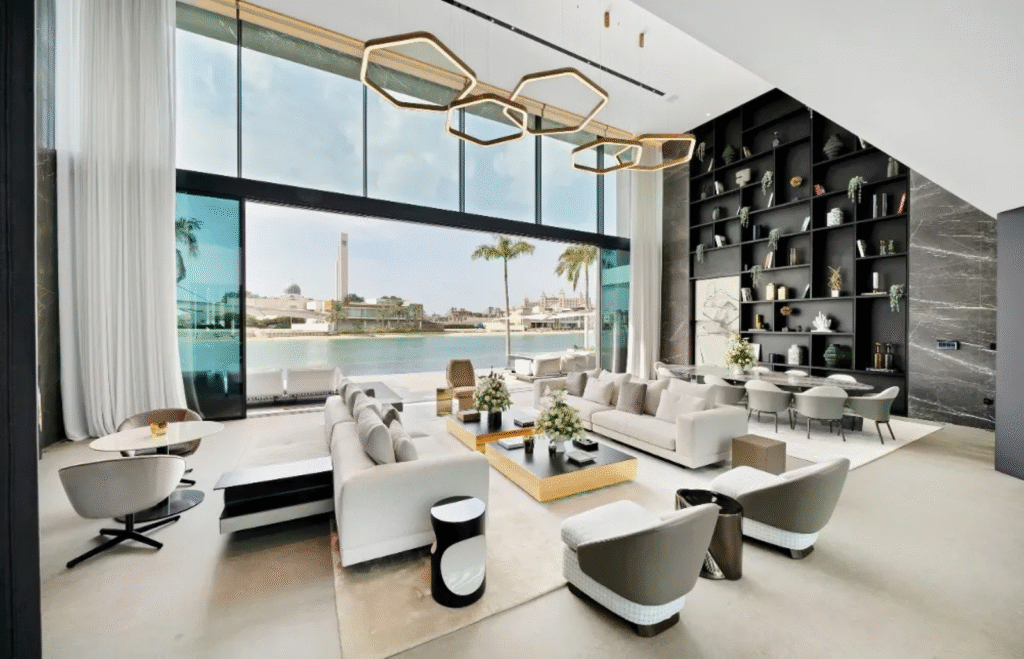
1. Signature Frond Villa: Coastal Grandeur
The Signature Frond Villa ($10 million) offers 5-7% yields and 10-15% price growth, featuring a private beach and infinity pool. It yields $500,000-$700,000 tax-free, saving $225,000-$315,000. Selling for $12 million yields a $2 million tax-free profit, saving $400,000-$560,000. No property taxes save $100,000-$120,000, and VAT exemption saves $500,000. Maintenance fees are $30,000-$40,000, with a 5% municipality fee ($25,000-$35,000). QFZP saves $36,000-$63,000. U.S. investors deduct depreciation ($181,818-$218,182), saving up to $76,364. Its iconic design near Atlantis The Palm defines ultra-luxury.
This villa feels like a majestic coastal masterpiece.
2. Royal Frond Estate: Bespoke Opulence
The Royal Frond Estate ($12 million) offers 5-7% yields and 10-15% price growth, featuring a private jetty and bespoke interiors. It yields $480,000-$672,000 tax-free, saving $216,000-$302,400. Selling for $14.4 million yields a $2.4 million tax-free profit, saving $480,000-$672,000. No property taxes save $120,000-$144,000, and VAT exemption saves $600,000.
Maintenance fees are $35,000-$45,000, with a 5% municipality fee ($24,000-$33,600). QFZP saves $43,200-$60,480. U.S. investors deduct depreciation ($218,182-$261,818), saving up to $91,636. Its tailored elegance attracts global elites.
This estate feels like a radiant luxury haven.
3. Crescent Villa: Skyline Serenity
The Crescent Villa ($15 million) offers 5-7% yields and 10-15% price growth, featuring panoramic skyline views and a private marina. It yields $600,000-$800,000 tax-free, saving $270,000-$360,000. Selling for $18 million yields a $3 million tax-free profit, saving $600,000-$840,000. No property taxes save $150,000, and VAT exemption saves $750,000. Maintenance fees are $40,000-$50,000, with a 5% municipality fee ($30,000-$40,000). QFZP saves $54,000-$72,000. U.S. investors deduct depreciation ($272,727-$327,273), saving up to $114,545. Its crescent location elevates ultra-luxury living.
This villa feels like a serene coastal jewel.
Why These Villas Are Ultra-Luxury
Price Range: Signature Frond ($10 million) suits high-end buyers; Royal Frond ($12 million) and Crescent Villa ($15 million) target ultra-elite investors.
Rental Yields: 5-7%, with short-term rentals at 5-7% for tourist demand; long-term leases at 5-6% for stability.
Price Appreciation: 10-15%, driven by exclusivity and global demand.
Lifestyle: Private jetties, bespoke designs, and smart tech create opulent living.
Amenities: Infinity pools, private beaches, and concierge services enhance allure.
ROI Verdict: 8-12% ROI, blending luxury with stellar returns.
Living here feels like embracing a radiant, ultra-luxury legacy.
Strategies to Maximize Returns
For individuals: Hold properties personally to avoid corporate taxes, saving $36,000-$72,000. Negotiate DLD fee splits, saving $160,000-$300,000. Use gift transfers to reduce DLD to 0.125%, saving $310,000-$581,250. Recover 5% VAT on developer fees via FTA registration ($500-$1,000). Leverage double taxation treaties with 130+ countries, saving $180,000-$360,000.
U.S. investors deduct depreciation ($181,818-$327,273), saving up to $114,545. For corporates: Secure QFZP status, keep QIF income below 10%, and claim depreciation deductions. Hire property managers ($30,000-$50,000 annually) and tax professionals ($1,000-$3,000) to avoid fines up to $136,125. Focus on short-term rentals in Crescent Villas, long-term in Royal Frond.
These strategies feel like a treasure map to your luxe wealth.
Risks to Watch in 2025
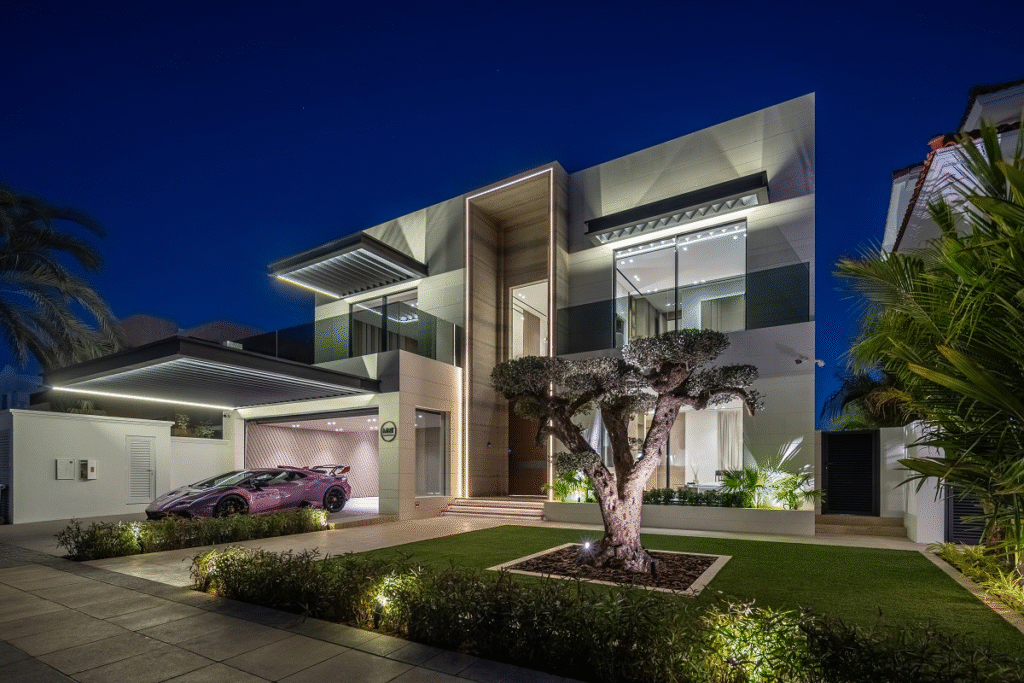
A projected oversupply of 182,000 units by 2026 may slightly slow price growth in newer frond developments, but the Palm’s prestige ensures resilience. Off-plan delays risk setbacks, so choose trusted developers like Nakheel and verify escrow compliance via the 2025 Oqood system. Non-compliance with VAT or DTCM rules risks fines up to $13,612, and corporate tax errors can cost $136,125. Indian investors must report properties in India’s Foreign Asset schedule to avoid $135,000 penalties. Currency fluctuations, like a 5% dirham shift, could impact returns.
Why These Villas Are Worth It
From the Signature Frond’s coastal grandeur to the Crescent Villa’s serene elegance, these new villas offer 8-12% ROI, 10-15% growth, and tax-free savings of $80,000-$840,000 annually. With Golden Visa perks, 85-90% rental occupancy, and a lifestyle of unparalleled opulence, they’re redefining ultra-luxury living in 2025. Navigate fees, secure your coastal palace, and invest in Palm Jumeirah’s radiant future.
read more: Dubai Marina’s 2025 Expansion Set to Redefine Waterfront Living



